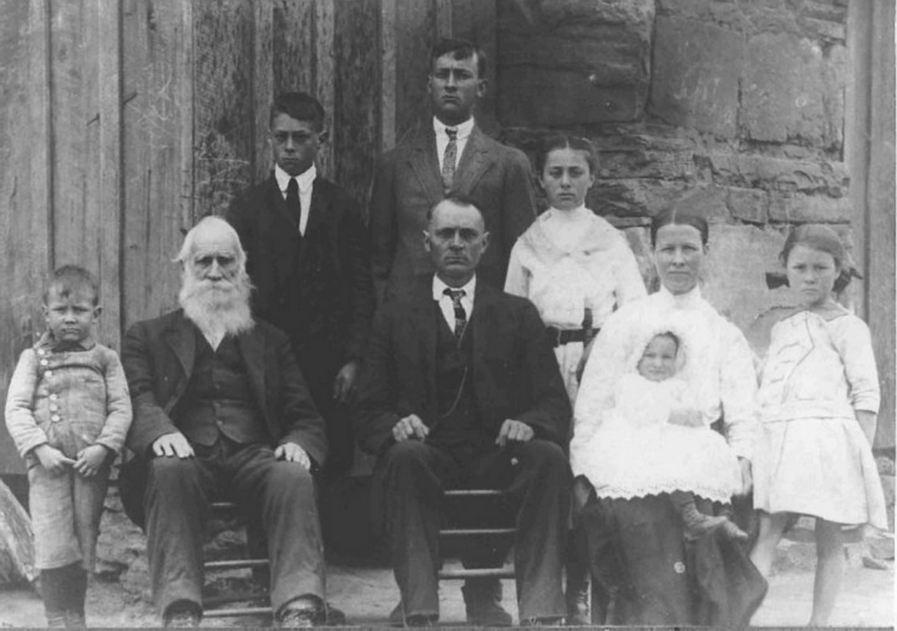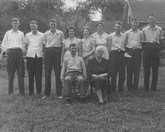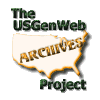|
Imagine leaving our complicated modern
lives to travel up an old, nearly impassable,
mountain dirt road to visit with an aging
hunter and farmer and his family with the
singular mission to hear and record their
stories for future generations. In 1939 A. T.
Long did just that when he visited Marson
Baynard's home as part of the Federal Writers
Project American Life Histories. The life of
Marson Baynard became one of thousands of
stories in this Work Projects Administration
(WPA) effort to employ writers and other
artisans hard pressed by the hard times of the
Great Depression and difficult economic
recovery. Beyond helping launch the careers of
many significant literary figures, these WPA
interviews have become a valuable resource for
historians and other researchers. This project
has also become a classic example of the
problems associated with documenting and using
oral history sources.
The essential difficulty with oral history
comes from the reality that living spoken
conversations, no matter how treasured, simply
do not create a fixed document that can be
neatly archived. People and their memories die.
When words stop reverberating in the ear, the
experience of them is gone forever leaving only
echoes of memory. While memories last longer
than words, they also fade with health and
perspective and time. And everyone has
experienced conversations where the following
day the realization of what should have been
said rises clearly and brightly as the emerging
morning sun. Ultimately, the use of oral
history as a source, just as any source,
requires careful consideration of its
reliability by the researcher. However, oral
history is unique in that researchers are also
frequently the interviewers who convert the
living memories to a document that can be
archived. This role presents additional
challenges and responsibilities.
The first special consideration in
documenting and recording oral history is the
technology that makes it possible. Oral history
from the eighteenth century is simply not
available due to technology limitations.
Throughout the twentieth century, interviewers
and archivists struggled with recording
technology. It remains a significant factor in
discussions among professional oral historians.
In the case of the WPA interviews, the
technological problems resemble the long string
of events leading to the nearly complete loss
of the 1890 Federal Census. Often, memory and
notes alone served as the recording media.
Other times, interviewers used the bulky yet
somewhat portable media of wax cylinders to
save these conversations for posterity. For far
too long, instead of reformatting the
recordings onto new technology, they were
stored in an overly warm environment. Heat and
wax do not mix well, and the resulting loss is
forever. Other technology has come and gone or
largely faded away. Metal and vinyl albums.
Eight track and reel to reel tapes. In one case
significant to Western North Carolina, writer
John Parris used wire recordings. These
recordings are archived in hopes that
eventually a working machine can be located to
play the recordings and transfer them to more
modern media. In the meantime, questions remain
as to whether or not the information recorded
on the wires still exists at all or can be
retrieved. Currently an increasing movement
promotes the use of digital formats for
preserving recorded interviews with the hope
that using Internet friendly file formats such
as .wav will allow continued access. However,
the challenge to provide for necessary
reformatting remains as the computer industry
creates new technology faster than current
technology can be integrated into existing oral
history projects. Beyond these issues, even the
latest recording device cannot help when
batteries go dead or the interviewer runs out
of tape or disks or forgets to hit the record
button. Practicing with even the most basic
equipment and having back-up supplies is
perhaps the most overlooked but vital part of
the interview process.
The only way to guarantee the interview will
survive technology changes remains the long
hours necessary to transcribe it as soon as
possible onto old fashioned paper - or better
yet the archival quality kind. While this can
never duplicate the inflections and gestures
that accompany oral communication, it can
preserve a significant part of the information
in the event that technology changes too
quickly for reformatting. Printed transcripts
are also easier to use in locating specific
information since they can be quickly skimmed,
are ideally indexed, and digital files can be
text searched by computer. Realistically,
transcription is time consuming, tedious, and
creates additional challenges. A good
transcription includes everything from the most
awe inspiring sentence to bracketed editorial
notes identifying background noises such as the
ring of a rotary telephone. The WPA interviews
were written by artists. The literary flow of
many Life Histories is far from the realistic
false starts, pauses, and ums that make up real
conversation. The literary approach also can
add significant biases and interpretations by
the interviewer far from the original
conversation. The interview of Marson Baynard
demonstrates this tendency as A. T. Long's
rendition of the interview took on a more
fictional tone, casting the family into
specific roles that would be appealing and
entertaining to an audience. Long also used
pseudonyms for the individuals he interviewed.
This is a controversial but at times
appropriate way to publish interviews. When
used, somewhere there should be a record of who
is really who such as the real names and their
story equivalents presented in the current
online account of the Marson Baynard "Up Hominy
Creek," interview located on the Library of
Congress American Memory Web Page.
Beyond the problems of transcribing an
interview without adding poetic license,
interviewers must constantly be aware of how
their questions and comments and even gestures
are influencing the answers themselves. But
questions are very much necessary. Before
conducting an interview, it is helpful to
conduct some background research about a
specific topic to know the terminology and
processes as well as how the individual to be
interviewed is connected to the topic in order
to create guiding questions. Beginning with
basic questions such as name and birth date
helps everyone get used to the interview
situation. Having prepared more questions than
can possibly be covered provides direction when
usually long winded people suddenly have very
short answers, especially with a recorder
present. While questions help guide the
interviewee to cover desired topics, they can
also add an external version of history while
subtly pressuring the individual to validate
that information. The story of Marson Baynard
in the American Life Histories does not provide
information about what questions were asked.
After all, this would seriously distract from
the literary approach A. T. Long and other
interviewers were working to attain as writers
and artists. As a result, current researchers
do not know what questions prompted the Baynard
family answers and what influence these might
have had in eliciting desired but perhaps not
entirely accurate responses.
Ultimately oral history reaches beyond
technology and transcripts and interviewers -
it is about the people being interviewed. The
words of the individuals reflect the most
significant aspect of the interview, and the
most important part of considering how the
interview can be used in research. Here,
researchers need to consider how the individual
was connected to the events reported. If the
individual was not actually there but was told
about an event, then the interview has moved
from recording oral history to recording local
tradition. Both are useful as long as the
limitations are considered. The temptation to
quickly record memories of older individuals
can become problematic when the individual has
aged beyond the limits of reliable memory.
Also, think about how an individual's personal
connection to the events may influence the
reporting. When the character of Marson Baynard
reported church as an excellent place to sleep
this opinion probably was not shared by many if
not the majority of parishioners.
Finally, oral history has brought its share
of lawyers into the research process since A.
T. Long and other Federal Writers Project
interviewers spoke with individuals from all
walks of life in all parts of the country. The
latest copyright regulations ensure that
anytime words are placed into any kind of fixed
media - be it in ink or digital recording, they
are immediately protected by copyright. Before
publishing interviews in a book, posting them
on the Internet, or simply placing them in an
archive for public access, the person being
interviewed has to sign a copyright release.
This is an annoying but ethically and legally
necessary formality. Regularly individuals try
to donate interviews to archives but cannot
since these institutions have to play by the
lawyers rules. Legal and other such details can
take the fun out of interviews on an individual
level. Often, it is helpful to work with an
established oral history project that can
provide the legal forms, place for permanent
storage, and other technical support so that
the interview process itself can return to an
enjoyable experience. In Transylvania County,
the Transylvania County Joint Historic
Preservation Commission has an established
ongoing oral history project housed at their
archives in Brevard, North Carolina.
The evolving field of oral history has moved
stories and memories from the simplicity of a
warm spring front porch to the boxy dark
organization of a library archives. Something
gets lost in the act of preservation like the
reality that green beans never taste quite
right after having been frozen. But these
interviews have also become an important part
of historic research for twentieth - and
twenty-first - century topics. The important
thing is to remember the same rules as come
into play with any source. No single source or
even type of source should be the only part of
research. Ultimately, the researcher is
responsible for evaluating the reliability and
usefulness of a source in context of the
subject being studied. Source information
should be included so that future researchers
can find more information or possibly correct
information later on. These citations may be a
formal footnote with dates, names of the
interviewer and interviewee, and repository
with an accession number. Or it could simply be
a mention of a "personal conversation with"
that too often has to substitute when words are
spoken before the electronic stores and
archivists and attorneys can enter into the
seemingly simple act of documenting
history.
- Linda Hoxit Raxter -
originally posted April 29, 2003
 ^ Back
to Top ^ Back
to Top
|






